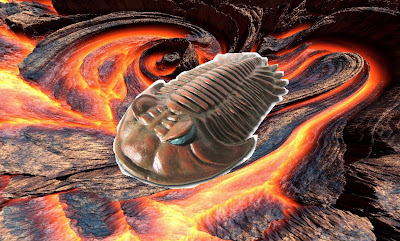So, now the students are back, for the last month or so my
work’s been pretty much on hold while I've been demonstrating non-stop for the
undergraduates. Somehow I've ended up helping on second year module practicals
for both Tectonic Processes and Sedimentology, subjects I've not gone
anywhere near since being a confused undergrad myself.
Tectonic processes was definitely the most fun of the two, with half of the practicals involving messy experiments, such as using cornflower
paste (which one student did keep eating), strips of plastic and wooden canes
to look at how varying the rates and amounts of applied strain affected how
different materials deformed as analogues for various rock types in the Earth’s
crust. The most impressive was using wet sand to produce a
half graben by piling the sand on top of plastic sheets and then pulling them
apart, which, if the sand had exactly the right moisture content, worked really
well, producing a nice series of stepped faults perpendicular to the direction of applied stress. Although trying to keep a straight face demonstrating this with my
supervisor at the front of the class while the students on the front table made
horrific innuendoes about the shape of the faultzone I was sticking my fingers
into kind of failed.
The best part of demonstrating for gullible, trusting
undergrads is definitely being able to tell them whatever you want and they will believe you so long as you keep a straight face. The other week they were
looking at faulting around the North African craton (paper here) and had to
work out why the faults were going around it rather than through it by looking
at this figure:
 |
| Stress envelopes of the lithosphere around the East African Rift System (Albaric et al., 2009) |
As can be easily seen from the strength envelopes, the real reason
the faults go around the craton is because it is much stronger down to greater
depths than the surrounding (younger) crust. However, it was too easy to
convince the students that the faults were going around the craton because Lake
Victoria is in the middle of the craton and you obviously can’t fault through a
lake as water does not deform in a brittle manner. I did have to eventually go
back and help them get to the real answer as otherwise they would have ended up
writing that bollocks in their exam or coursework. Although this still isn't in the same
league as managing to convince the girlfriend the other week that if the proposed badger
cull had gone ahead, swan populations would spiral out of control, as the badger
(with its semi-aquatic lifestyle and massively strong jaws) is their only
natural predator…
My favourite question from one of the students, in one of the Sedimentology
practicals, was a guy asking if the ichnofossil (I think it was a cruziana;
an arthropod feeding trace) he was looking at was in granite. If I hadn't already spent half the class arguing with one of the professors over whether
one of the samples was actually a sedimentary rock or not (I thought it was an
igneous rock (a gabbro) rather than a very immature breccia which she eventually convinced me it was) I should have attempted to convince him that strange thermophilic
arthropods did actually live in magma chambers, rather than just admit it was a
slightly metamorphosed sandstone/quartzite. Although the majority of these practicals
were rather like pulling teeth, how hard is it to describe a mudstone?
 |
| Could evil, intelligent magma dwelling trilobites have left tracks in granite? |
This Saturday I ended up on a fieldtrip to look at coastal
sediments on the North Norfolk coast, as is customary for any geology trip I was hungover and the
weather was horrific, cold, wet and windy. This was especially fun for the
undergraduates who had decided they wouldn't need waterproofs – although one
did bring an umbrella which I'm amazed survived the whole day. Luckily both
myself and the other demonstrator were only there to make up the numbers for
health and safety purposes, as neither of us knew anything about what was being
taught. So, basically, it was like we were undergrads again, stood at the back
of the group learning about how cynobacterial mats consolidate sediments, what life is like for a diatomaceous slime and the formation processes of various forms of
ripples, while actually getting paid for it. It was nice to get information
spoon fed again, I didn't realise just how easy being an undergrad is – it seemed
a lot harder the first time round!
This week the students are off on their ‘reading’ week
(nobody ever reads), so I should be back doing my own science. However, my mass
spectrometer is, of course, broken again. I had to dismantle it a couple of
weeks ago and I've now been waiting for the workshop to lathe me a new part for
a fortnight. I do think this is a good thing as it means I've actually got very
little to do other than play about with old data and prep samples for when it’s
finally up and running again, giving me a much needed break from swearing at
the damn machine and plenty of time to mess about with other projects as we’re
currently in the middle of something rather special, but there’ll probably be
more on that next time…
 |
| How does this go back together again? |

No comments:
Post a Comment